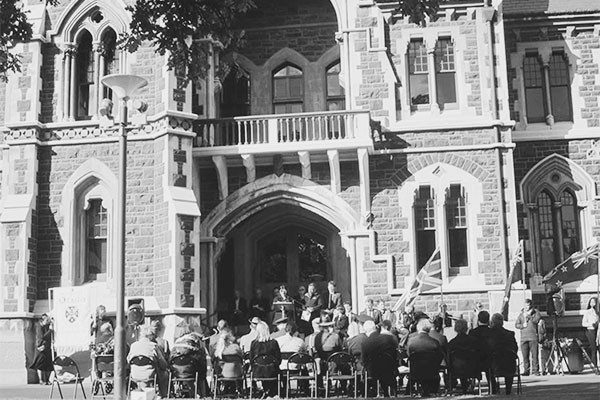A week on from the ANZAC day commemorations, many of the emotive anecdotes, moving speeches, and poignant minutes of silence may largely be forgotten for another 51 weeks. New Zealand played a sizeable and courageous part in the wars, but how much of a part did Otago University play in the largest conflicts in recent history?
World War I
As you can imagine, many students and staff members were caught up in the wars, and had to suspend their teaching and studies to partake in the catastrophic conflict. A blog, authored by Dr Ali Clarke, Research Fellow at the University of Otago’s Department of History and Art History, noted, “at the beginning of 1914 there were just over 600 students enrolled at Otago, 70 percent of them male… [Although] numbers attending dropped off rapidly as young men headed for the front.” Indeed, the chancellor of the university, in March 1915, noted that, “at least a hundred students are wearing their King’s uniform.” By 1916, when conscription was introduced for New Zealand, some staff were told that their services were indispensable to the University, although those with medical expertise were in particular demand during the war. The dental school, which by 1914 had just eight students, provided three of them to the armed forces.
The biggest headache the first-world war presented for the university authorities was retaining sufficient staff to continue their educational services. Due to WWI being the first total war, in that there were few or no boundaries to weaponry, collateral damage or policy, no one knew how long it would continue for. This meant granting leave to those who were leaving for military service was difficult, and when conscription was introduced in 1916, the university council also “had to decide whether or not to appeal against the calling up of its employees.”
Numerous senior staff members did head overseas to serve their country in World War I. Daniel Waters, Professor of Metallurgy and Assaying in the School of Mines, served for two years; Henry Pickerill, Dean of the Dental School, served for three years; Louis Barnett, Professor of Surgery, served two years; and another, Thomas Adams, Professor of Classics, spent three years abroad beginning in 1917, “having been seconded for army educational duties in England.”
World War II
The precise number of Otago University staff and students who were involved in World War II are unknown, but by December 1942 as many as 13 members of staff and 725 students were on active service, with 28 already having passed away in the conflict. The total student numbers at the university being just over 1400, the 725 student soldiers represented a huge proportion of the university’s numbers. In addition to the amount of people who were removed from teaching or studying by the war, or died as a result of the war, the university faced consequences in other ways between 1939 and 1945 and beyond.
Two positive consequences for the university is a marked growth of student numbers during, and following the end of the war in 1945. Although half of students were fighting by the end of 1942, the student body grew significantly from 1348 in 1942 to 1839 in 1945 and the end of the war led to a “huge influx of students in 1946, when the toll reached 2440,” according to Ali Clarke. A significant wartime drop in arts students was coupled with enrolment issues in commerce and law. Despite these drops, the science and medical faculties grew and scientific advance and the demand for both civilian and military doctors reached its peak.
Another positive consequence of the war was the new leadership opportunities that presented themselves for women. Female student numbers increased from just 25 percent of the student body in the mid-1930s to 40 percent in 1942, although they would not reach 40 percent again until 1976. Despite their numbers dropping back to 30 percent after the war, they were elected to prominent student positions, including to the students association executive, editor of Critic, and presidents of the drama and literary society.



